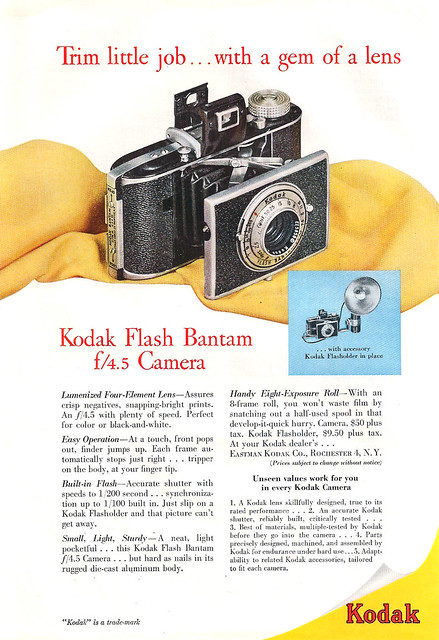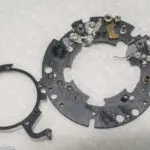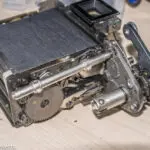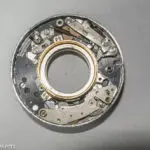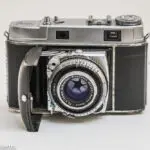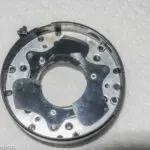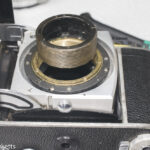The Kodak Flash Bantam camera was made in about 1947 and follows on from a number of similar cameras that Kodak made in the same series. It is a very small, in-fact pocket sized camera, which uses a format of film which is now long gone - the 828 format. Although I've only had my copy for a couple of weeks, it has already become one of my favourite Kodak cameras because of the very stylish and attractive design.
My Kodak Flash Bantam camera
I bought this camera along with another Bantam (the Art Deco f/6.3 version) as a 'Buy it now' sale from eBay a couple of weeks ago. They were on for a bargain price, and although they take a film which is no longer produced, I thought, with the current inflation in price of vintage cameras, if nothing else they would be an investment.
When the camera arrived, along with its sibling, I found that it is in superb condition for something made over 70 years ago. There is a little corrosion around the viewfinder and some shutter speeds are a bit sluggish, but the condition of the leatherette cover and the lenses is very good. Most importantly, the bellows between the lens and the camera body are in perfect condition and light tight. Cosmetically, other than a clean-up, nothing else is required.
I'll need to fix the shutter, but I'm almost certain that will be a case of just cleaning the mechanism. I think the shutter is a unit made by Kodak rather than a shutter supplied by one of the famous shutter manufacturers, but I'll find out more when I get it apart.
Pictures of the Kodak Flash Bantam
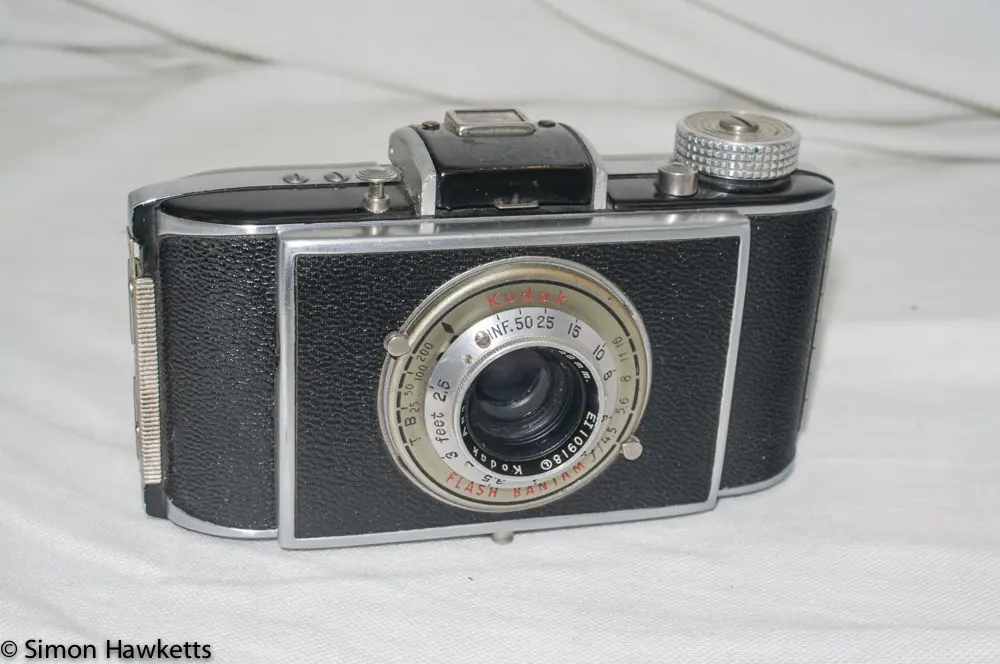

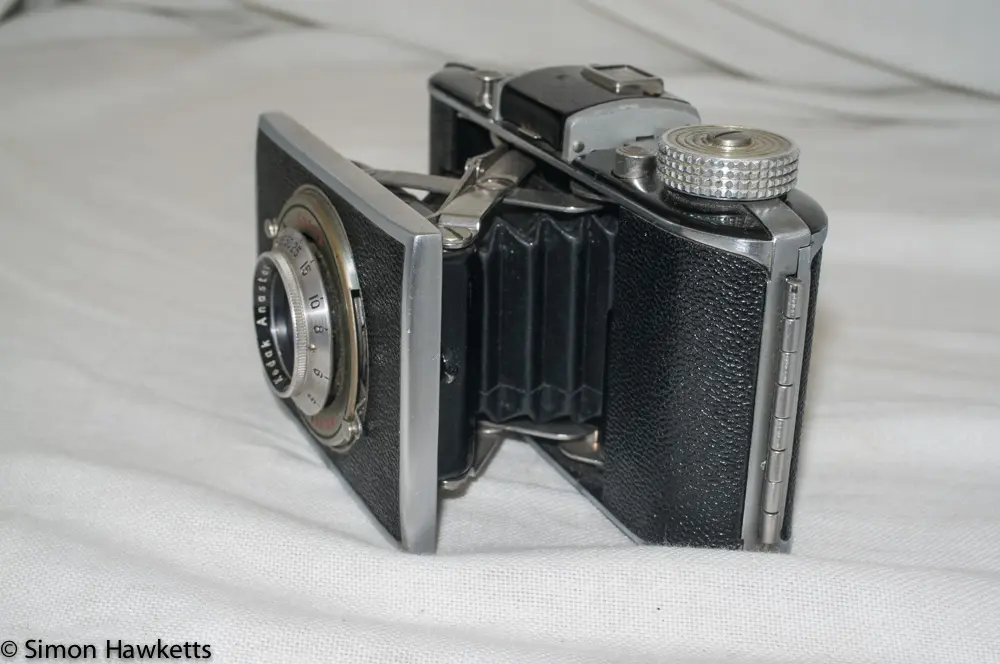
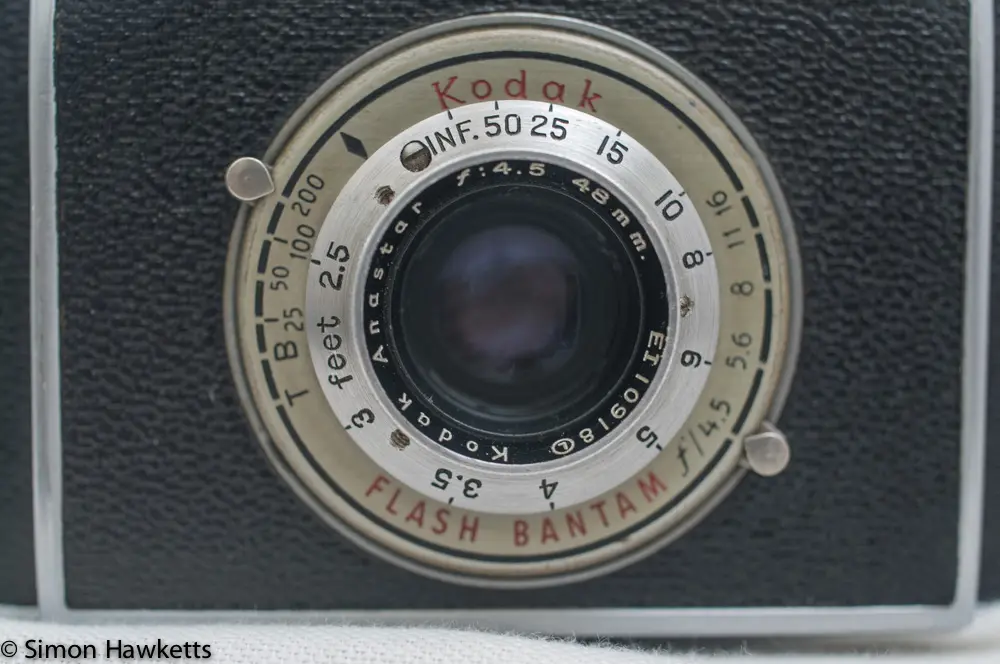
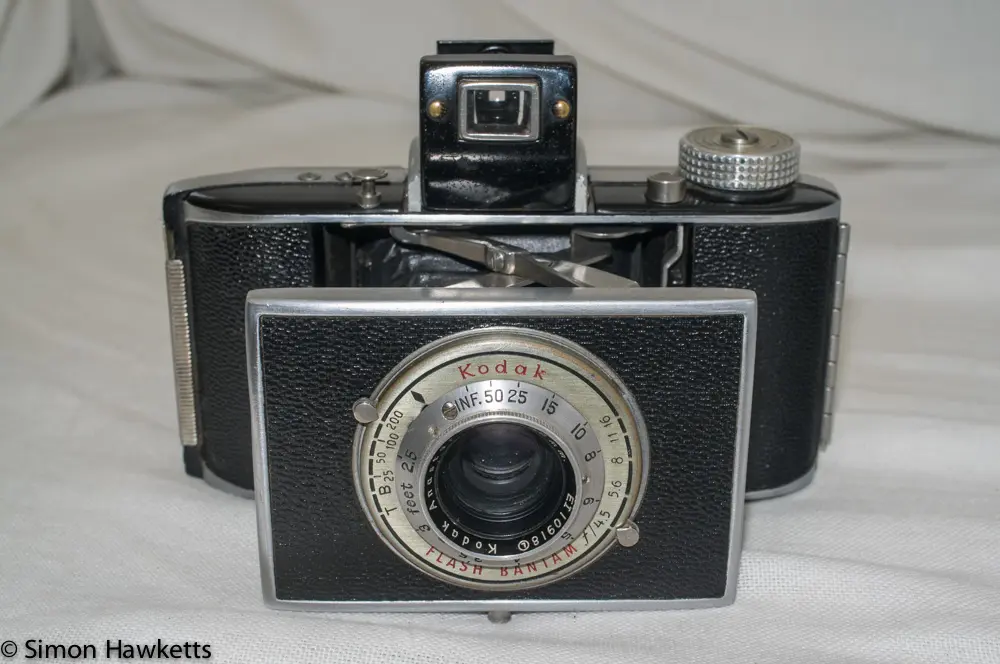
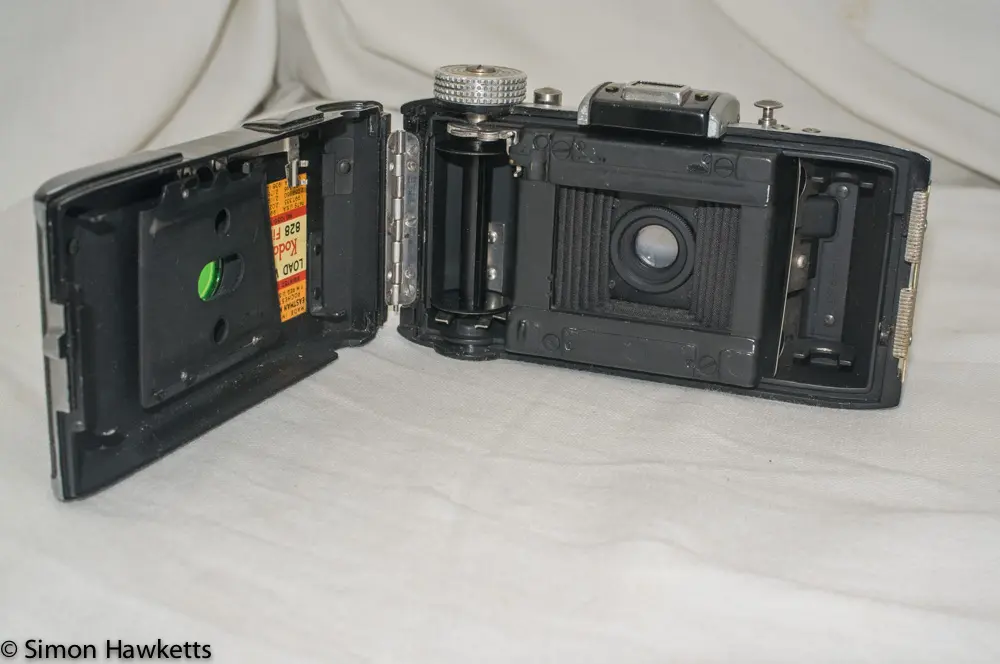

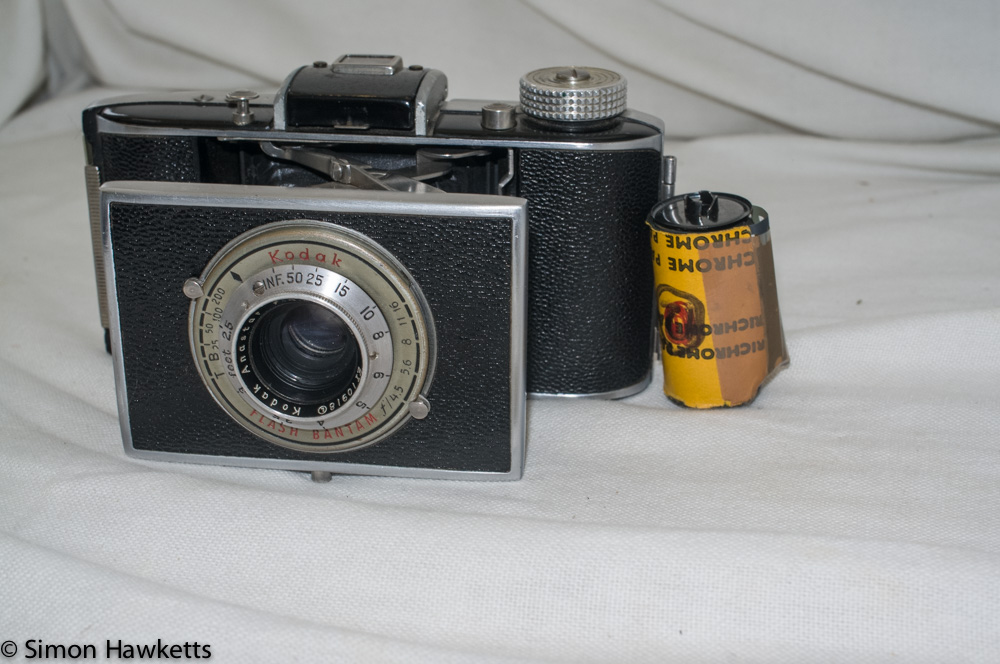
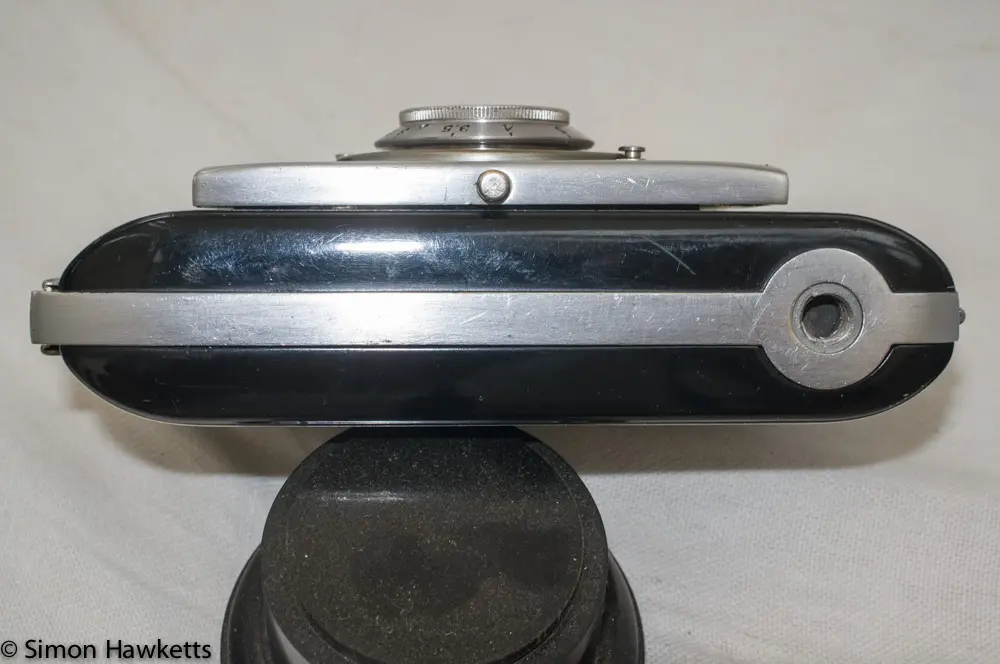
Kodak Flash Bantam Description
The Kodak Flash Bantam is a viewfinder, folding camera with manual focus, shutter speeds from 1/25 to 1/200 and an f/4.5 aperture. The specs are fairly unremarkable, but what makes the camera stand out in my view is the small, pocketable size and the 'look' of the camera.

The pictures above show what the camera looks like, but don't really give an indication of the size until I explain that the roll of film shown next to the Flash Bantam is basically the same size as 35 mm film. So the camera is just a little bigger than a 35 mm cartridge.
This small size, coupled with the fact that the camera is a folding design, means it is really easy to slip into the pocket and carry about with you, which is, I guess, how Kodak marketed the camera in the late 1940s.
Kodak Flash Bantam film
The film used in this camera is a format called 828 which is now long gone, the last roll being sold sometime in the early 1980s.
828 film was the same width as 35 mm film, but didn't have sprocket holes down each edge; instead there were single sprocket holes spaced 40 mm apart, which is the size of each frame. The sprockets interact with a latch built into the camera frame advance knob, which stop the film at the point the frame is ready to be exposed. So the process for winding the film was to turn the knob until it stops, take the exposure, and then disengage the latch with a small button on the back of the camera and wind on to the next frame.
The film also differed from standard 35 mm because it had a backing paper with frame numbers on which could be read through a small coloured window in the back cover of the camera.
It is possible to recreate a roll of 828 film with 35 mm film and some original 828 backing paper for the purposes of testing the camera. There are various web pages which describe how this is done, and since I have a set of backing paper, I might give it a try.
Using the Kodak Flash Bantam
The Kodak Flash Bantam is a fully manual camera, as you would expect given its manufacture date of 1947. This means, of course, that the photographer needs to open the camera, wind to the next frame, set the focus, exposure, composition and then cock and release the shutter.
The camera is opened using a small button next to the frame advance knob on the top of the camera. When pressed, the front pops out with quite a force (even on my 70-year-old example!).
The film is advanced to the next frame by pressing a little button on the back of the camera to disengage the film advance ratchet, and winding the knob until the film stops.1

The focus is set by turning the lens which has a scale on the front that lines up with a reference point just after the shutter speed settings. The photographer must either guess the distance to their subject, or use an add-on rangefinder to measure it.
The exposure is set with a combination of shutter speed and aperture setting. The bantam has a total of 4 shutter speeds and 5 aperture settings, so there is quite a range of different light levels that can be accommodated, from 1/25 sec at f/4.5 right up to 1/200 sec at f/16. To measure the light in the scene, the photographer could use a light meter, but I suspect the majority of Bantam users probably used the little chart that was printed on the side of the film box which gave typical settings for Sunny day, cloudy day etc.
Once the focus and exposure were set, the shutter needs to be cocked using a small lever on the top of the shutter, and then finally the picture can be taken with the shutter release button next to the viewfinder.
With the picture taken, the photographer collapses the camera by pressing the front in until it clicks.
The notable feature of the Kodak Flash Bantam camera, which differentiated it from the Kodak Bantam, is the addition of a flash synchroniser which allowed the photographer to take pictures at night, or in dark conditions, with the add-on flash accessory. This plugged into a small post on the lens unit and fired the bulb at the correct time whilst the shutter was open.
Kodak Bantam Flash Specifications
- Kodak Flash Bantam folding viewfinder camera
- First manufactured in 1947
- Uses 828 film to give 8 exposures 40 mm x 28 mm
- Kodak Anstar f/4.5 48 mm lens
- Shutter speeds 1/200, 1/100, 1/50, 1/25 + bulb and time exposure
- Flash contact on shutter, synchronised up to 1/100 sec
- Cable release socket
- Fully manual operation
- Tripod bush on base
- Table stand built in
- Handbook available on-line here.
A YouTube short featuring the Flash Bantam
This is a YouTube short I made featuring the Flash Bantam so you can get an impression of the size etc.
My preliminary assessment of the Kodak Bantam Flash
This is my preliminary assessment, because I haven't yet run a film through the camera, so when that happens I'll update this post.
In order to form an assessment, it's necessary to know why the manufacturer made the camera in the first place, and what audience they were aiming the camera at. That's not easy to do from 70 years away, but I did a bit of research and found this original advert for the Kodak Flash Bantam on Flickr.
The main headings in the ad are:
- Lumenized 4 element lens
- Easy Operation
- Built in Flash
- Small, Light, Sturdy
- Handy eight exposure roll
To me, these suggest that Kodak were emphasizing, Quality, Ease of use and Smallness of size, so these are the factors that I am assessing the Flash Bantam on. And using these points, I think Kodak did a great job on both ease of use and pocket-ability. At the moment, I can't make a judgement on the quality of the picture produced because I need to run a film through it first.
Ease of use must be assessed in comparison with other cameras produced at the time, because obviously, when compared to today's camera-in-your-pocket, the mobile phone the camera is far more difficult to use. But compared to other cameras of the era, like for example the Agfa Karat, the Kodak Flash Bantam is certainly no more difficult to use.
I think the real positive is the smallness of size, however. This camera really is pocket sized and I can imagine anyone being able to slip it into their jacket or dress pocket, or a handbag to have it available at anytime on a picnic, or day out.
Just think of the number of happy memories this little unit will have captured over its 70-year history.
- It's also possible to look through the little window in the back of the camera to see the next frame number appear. If using a modern 35 mm film, this is how the camera would need to be wound on, with the button on the back pressed down all the while, or the 35 mm sprockets would engage the ratchet continuously. [↩]
